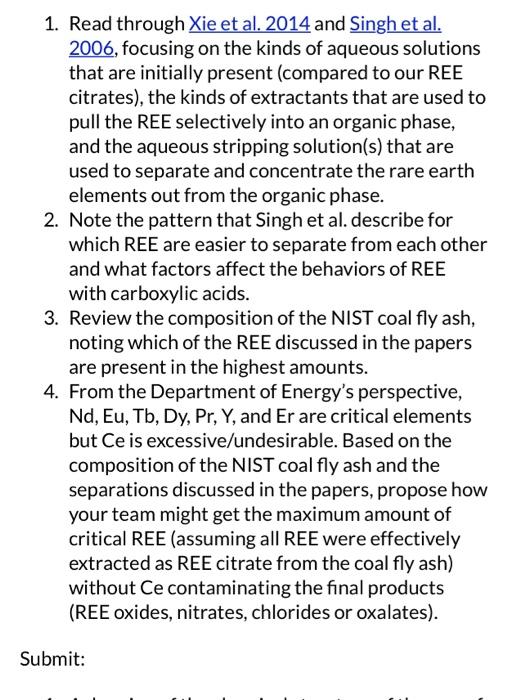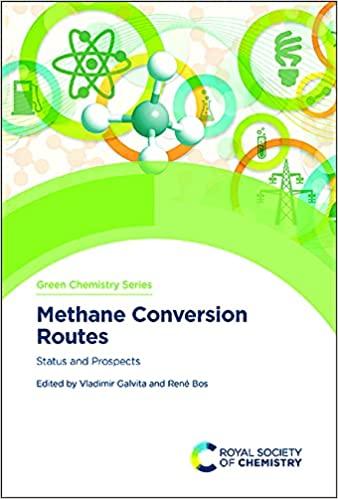1. Read through Xie et al. 2014 and Singh et al. 2006, focusing on the kinds of aqueous solutions that are initially present (compared to our REE citrates), the kinds of extractants that are used to pull the REE selectively into an organic phase, and the aqueous stripping solution(s) that are used to separate and concentrate the rare earth elements out from the organic phase. 2. Note the pattern that Singh et al. describe for which REE are easier to separate from each other and what factors affect the behaviors of REE with carboxylic acids. 3. Review the composition of the NIST coal fly ash, noting which of the REE discussed in the papers are present in the highest amounts. 4. From the Department of Energy's perspective, Nd, Eu, Tb, Dy, Pr, Y, and Er are critical elements but Ce is excessive/undesirable. Based on the composition of the NIST coal fly ash and the separations discussed in the papers, propose how your team might get the maximum amount of critical REE (assuming all REE were effectively extracted as REE citrate from the coal fly ash) without Ce contaminating the final products (REE oxides, nitrates, chlorides or oxalates). but C is excessive/undesirable. Based on the composition of the NIST coal fly ash and the separations discussed in the papers, propose how your team might get the maximum amount of critical REE (assuming all REE were effectively extracted as REE citrate from the coal fly ash) without Ce contaminating the final products (REE oxides, nitrates, chlorides or oxalates). Submit: 1. A drawing of the chemical structure of the one of the high-molecular-weight carboxylic acids tested in Singh et al. 2006. Indicate which part of the chemical structure will interact with the REE and which part will interact with the organic solvent (dodecane). 2. Make a recommendation to your team about whether or not to use an organic solvent to try to extract REE citrate from the raw extract (immediately after the carbon dioxide has evaporated), or whether to try some step, such as precipitation, to purify the raw extract first. Give at least two reasons for your recommendation. 3. Identify an REE solvent extraction pathway your team should consider if the goal is to recover critical REE without Ce. Refer to at least two (parts of the) figures in Xie et al. 2014 to explain your ideas








